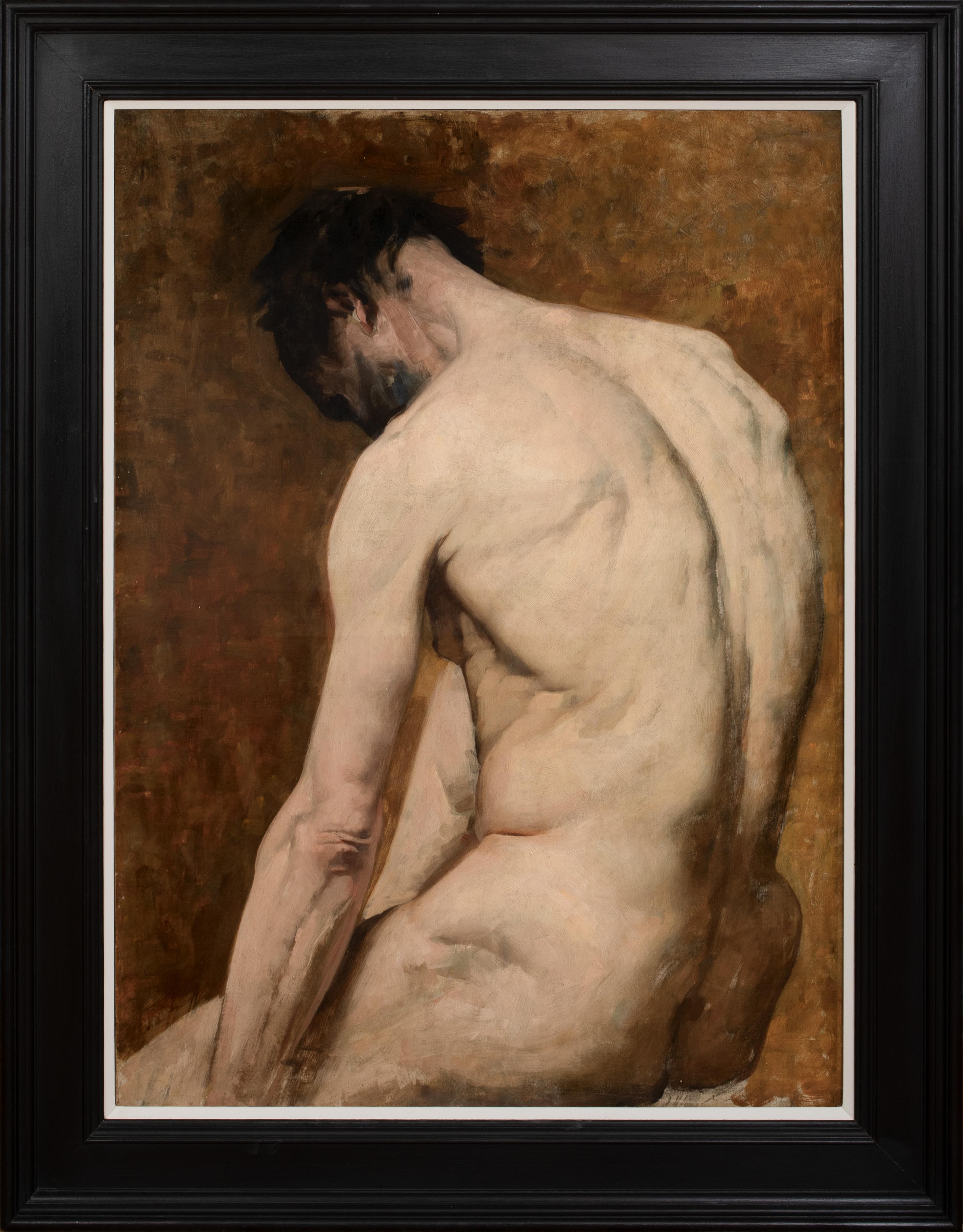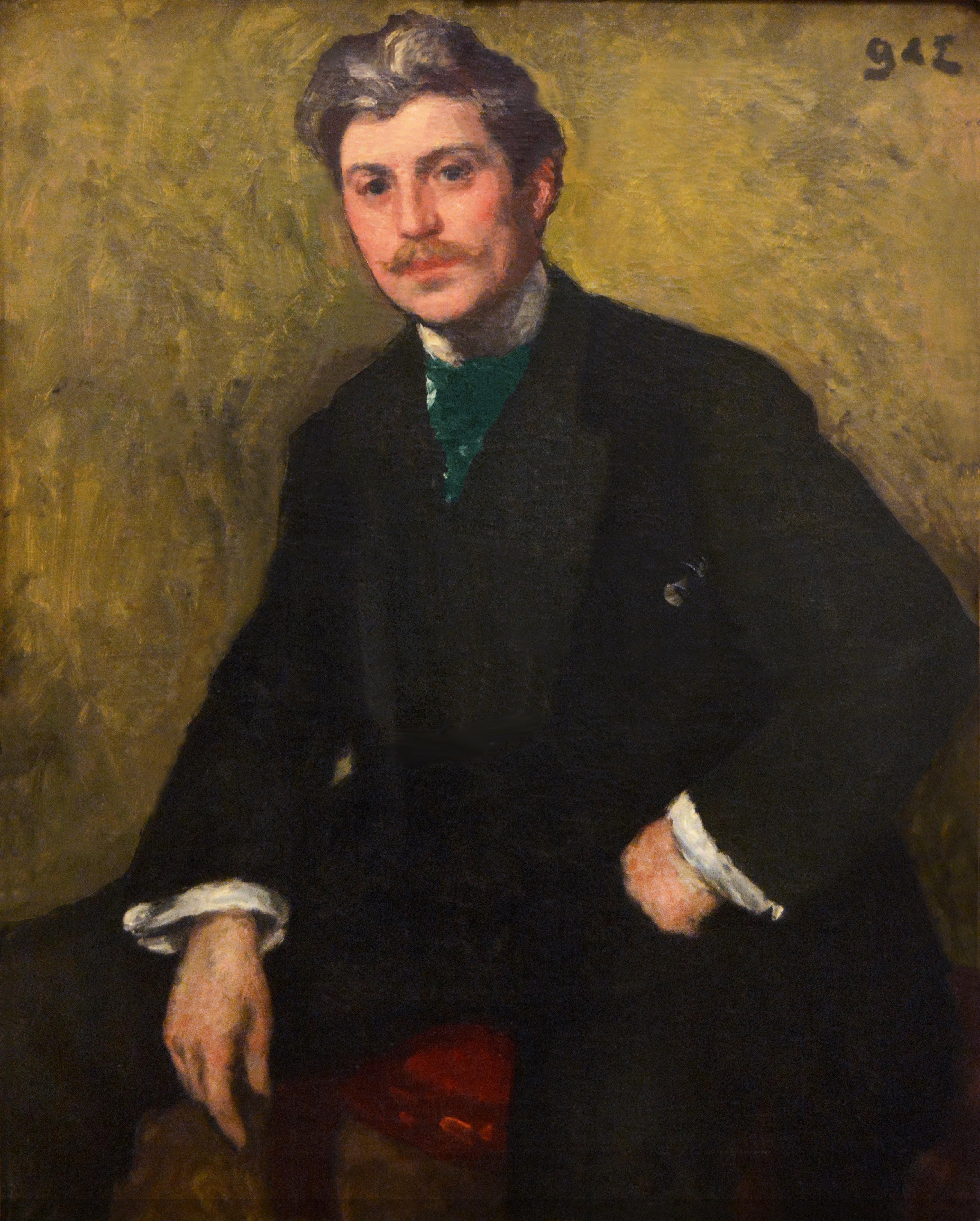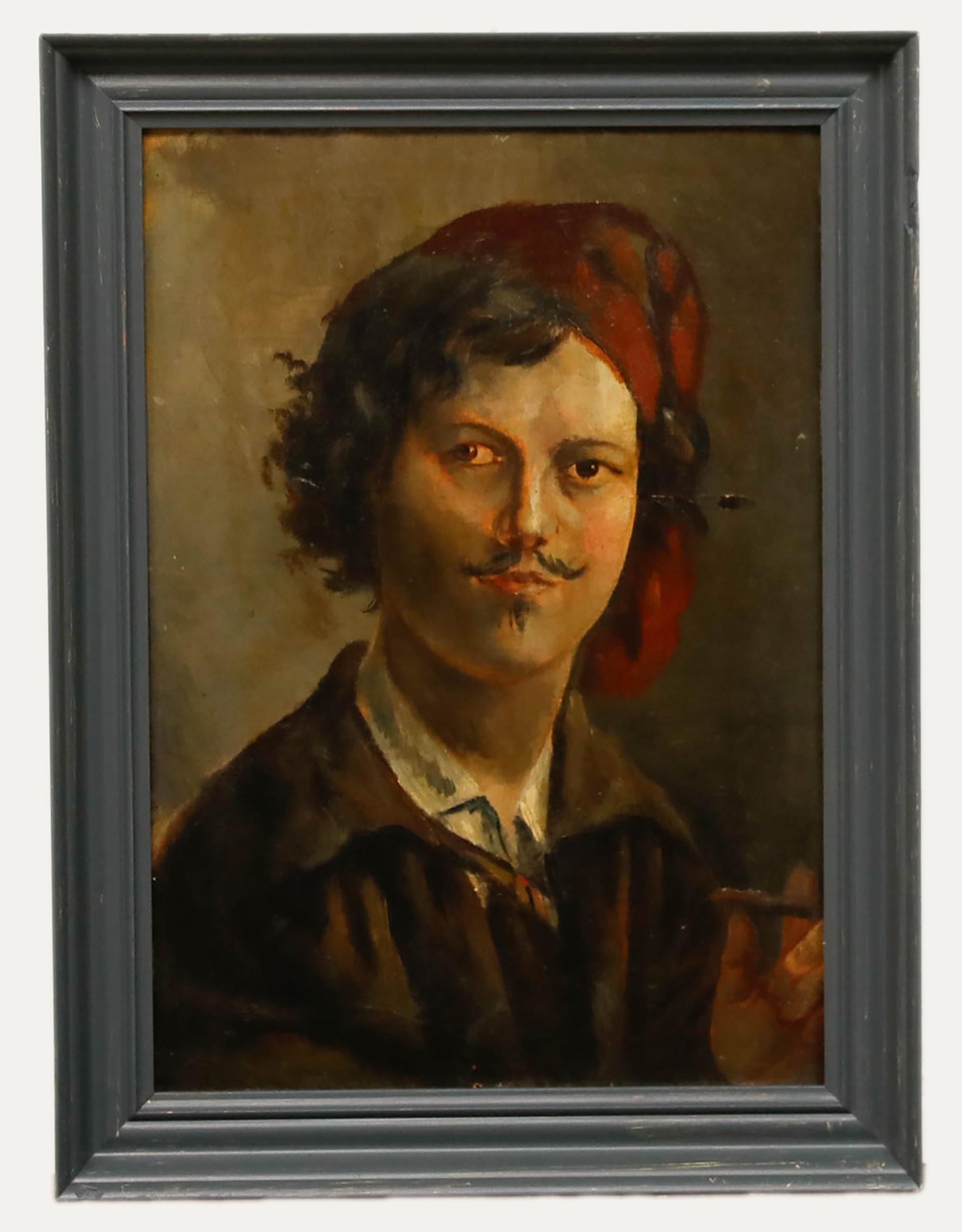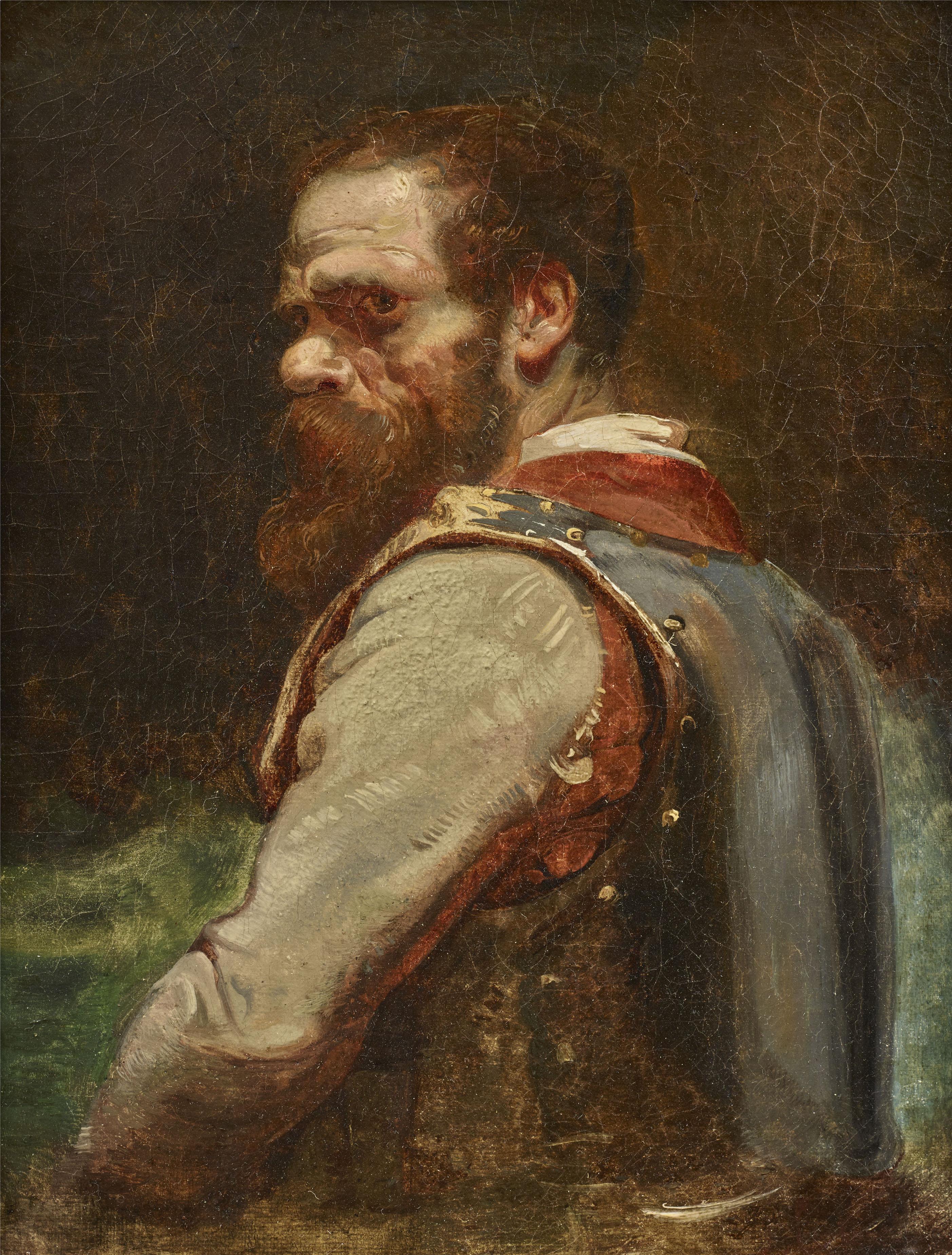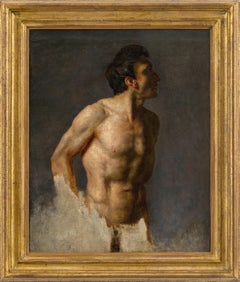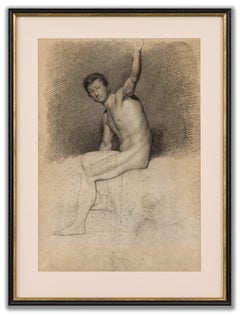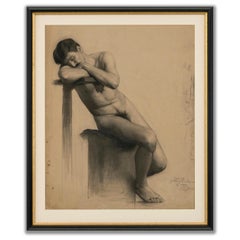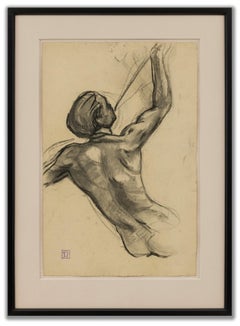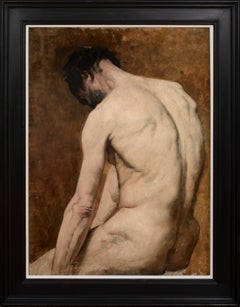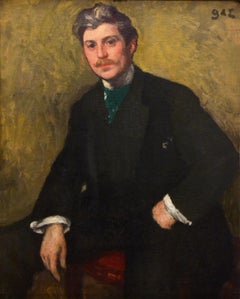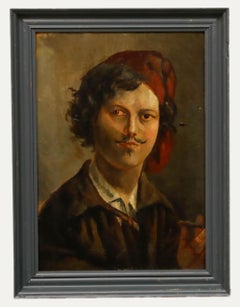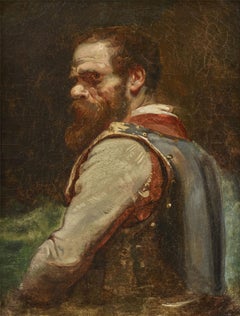Items Similar to Academic Study
Want more images or videos?
Request additional images or videos from the seller
1 of 9
François ForichonAcademic Study1889
1889
$4,858.67
£3,600
€4,173.69
CA$6,787.15
A$7,383.72
CHF 3,896.28
MX$88,801.97
NOK 49,150.01
SEK 45,741.87
DKK 31,170.66
About the Item
Oil on canvas
Signed, dated and dedicated (upper right)
46cm × 38cm (59cm × 51cm framed)
Forichon was a pupil of the Ecole des Beaux-Arts de Paris and was taught by Jean-Léon Gérôme, before going on to be the director of the School of Fine Arts in Nîmes.
- Creator:François Forichon (1865 - 1952, French)
- Creation Year:1889
- Dimensions:Height: 23.23 in (59 cm)Width: 20.08 in (51 cm)
- Medium:
- Movement & Style:
- Period:
- Condition:There is a degree of craquelure across the picture, which is not unusual for an oil painting of this age.
- Gallery Location:London, GB
- Reference Number:Seller: Forichon, Academic Study1stDibs: LU2263216518082
About the Seller
5.0
Vetted Professional Seller
Every seller passes strict standards for authenticity and reliability
Established in 2013
1stDibs seller since 2022
5 sales on 1stDibs
Typical response time: 2 hours
- ShippingRetrieving quote...Shipping from: London, United Kingdom
- Return Policy
More From This Seller
View AllAcademic Study
Located in London, GB
Oil on Canvas
46cm × 37cm (57cm × 49cm framed)
Until the 1930s, this painting was considered to be by Théodore Géricault. Indeed, since its creation c.1810, it has been sold twice a...
Category
19th Century French School Figurative Paintings
Materials
Canvas, Oil
$15,520
French School, Academic Study (Male Nude)
Located in London, GB
Charcoal on paper, 60cm x 42cm, (74cm x 60cm framed). The picture is framed behind museum quality non-reflective UV glass.
Drawings and paintings of the nude were central to academ...
Category
19th Century Old Masters Nude Drawings and Watercolors
Materials
Paper, Carbon Pencil
Academic Study
Located in London, GB
Charcoal on paper
Signed and dated (lower right) and also by RA visitor George Clausen
66cm × 54cm (80cm × 67cm framed)
This drawing was created in the life-class room in the Royal ...
Category
Late 19th Century English School Figurative Drawings and Watercolors
Materials
Paper, Charcoal
Academic Study (Archer)
Located in London, GB
Jean Durand, (French 1894-1977) Academic Study (Centaur), c.1930s, Charcoal on paper, studio stamp (lower right), 32cm x 48cm (63cm x 46cm framed.) The picture is framed behind museu...
Category
1930s Art Deco Nude Drawings and Watercolors
Materials
Paper, Charcoal
Academic Study
Located in London, GB
Charcoal on paper
Signed by RA visitor Edwin Long and dated (lower right)
76cm × 57cm (88cm × 64cm framed)
Olivier studied at the Royal Academy Schools from 1881. He exhibited exten...
Category
Late 19th Century English School Figurative Drawings and Watercolors
Materials
Paper, Charcoal
Figure Study
By Charles Haslewood Shannon
Located in London, GB
Red and black chalk on paper, with white highlights
Initialed ‘CHS’ and dated (lower right)
27cm × 25cm (43cm × 39cm framed)
Shannon studied at Lincoln School of Art and at Lambeth ...
Category
19th Century English School Figurative Drawings and Watercolors
Materials
Paper, Chalk
You May Also Like
Study Of A Nude Male, 19th Century French Academy Study
Located in Blackwater, GB
Study Of A Nude Male, 19th Century
circle of HENRI DE TOULOUSE-LAUTREC (1864-1901)
Large 19th Century French Academy portrait of a male nude in a studio, oil on canvas. Excellent q...
Category
19th Century Portrait Paintings
Materials
Oil, Canvas
$7,557 Sale Price
30% Off
L'Homme assis
By Georges d'Espagnat
Located in Mc Lean, VA
Impressionist Painting of a Man in an elegant interior- Paintings of men are rare on the market . Housed in a custom gold leaf frame
* The Robert Lehman Collection at the Metropol...
Category
1910s Paintings
Materials
Oil
French School 19th Century Oil - Young Painter
Located in Corsham, GB
A charming self-portrait by a young French painter in a red cap holding a paintbrush. Unsigned. Well presented in a painted wooden frame. On paper laid to board .
Category
19th Century Portrait Paintings
Materials
Oil
The Cuirassier
Located in PARIS, FR
Nicolas Toussaint Charlet (1792 - 1845)
The Cuirassier
27 x 21.5 cm
42 x 36,5 x 5 cm with frame
Without signature
Category
19th Century Figurative Paintings
Materials
Canvas, Oil
Disegno Accademia figurativo ritratto maschile neoclassico veneto del XIX secolo
Located in Florence, IT
Il disegno è realizzato su un unico pezzo di carta beige, le misure sono ( x cm; con il passepartout x cm). La cornice è a scopo espositivo e non è inclusa nel prezzo.
Il soggetto r...
Category
Mid-19th Century Academic Nude Drawings and Watercolors
Materials
Chalk, Cardboard, Laid Paper
Study for Haman and Merdocai
By Paul Alexandre Alfred Leroy
Located in PARIS, FR
Oil on canvas
73 x 45 cm
Inscription lower left: 'A D. Veréchia study for "Mordochea"
Paul Alexandre Alfred Leroy spent a part of his childhood in Odessa and entered the Fine art...
Category
19th Century Figurative Paintings
Materials
Canvas, Oil
More Ways To Browse
Iyiola Odunayo
Jean Beraud
Jean Jacques Henner Oil Painting
Joyce Roybal
Lady Godiva
Lingerie Painting
Luca Giordano
Mother With Children Painting
Nugzar Kakhiani
Oil Paintings Of Sailor
Oil Paintings Of Swimmers
Oil Paintings With Cherubs
Old Russian Painting
Omar Abdel Zaher
Painting Of Milan
Paintings Cossacks
Paul Elie Gernez
Pensive Girl

